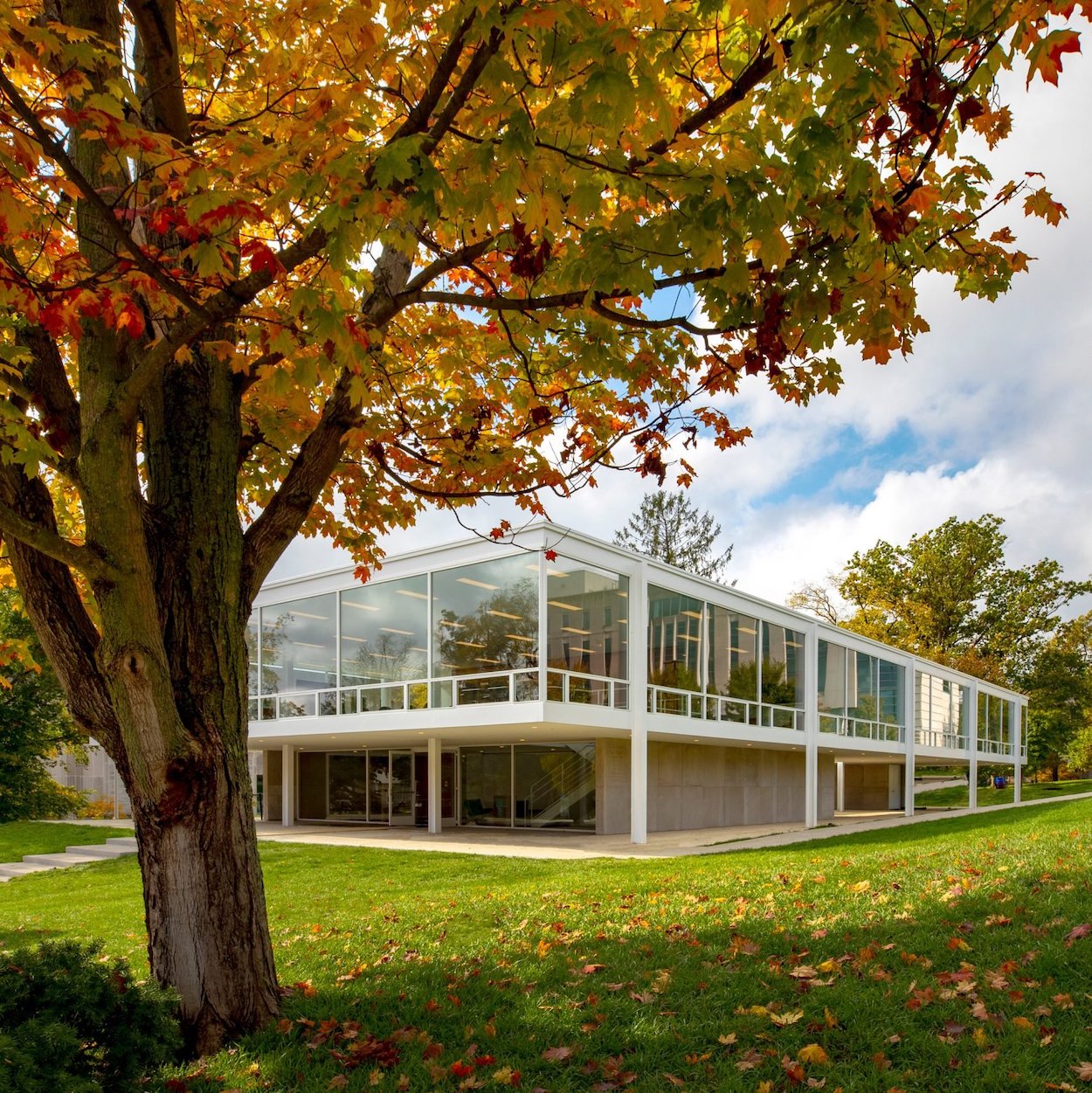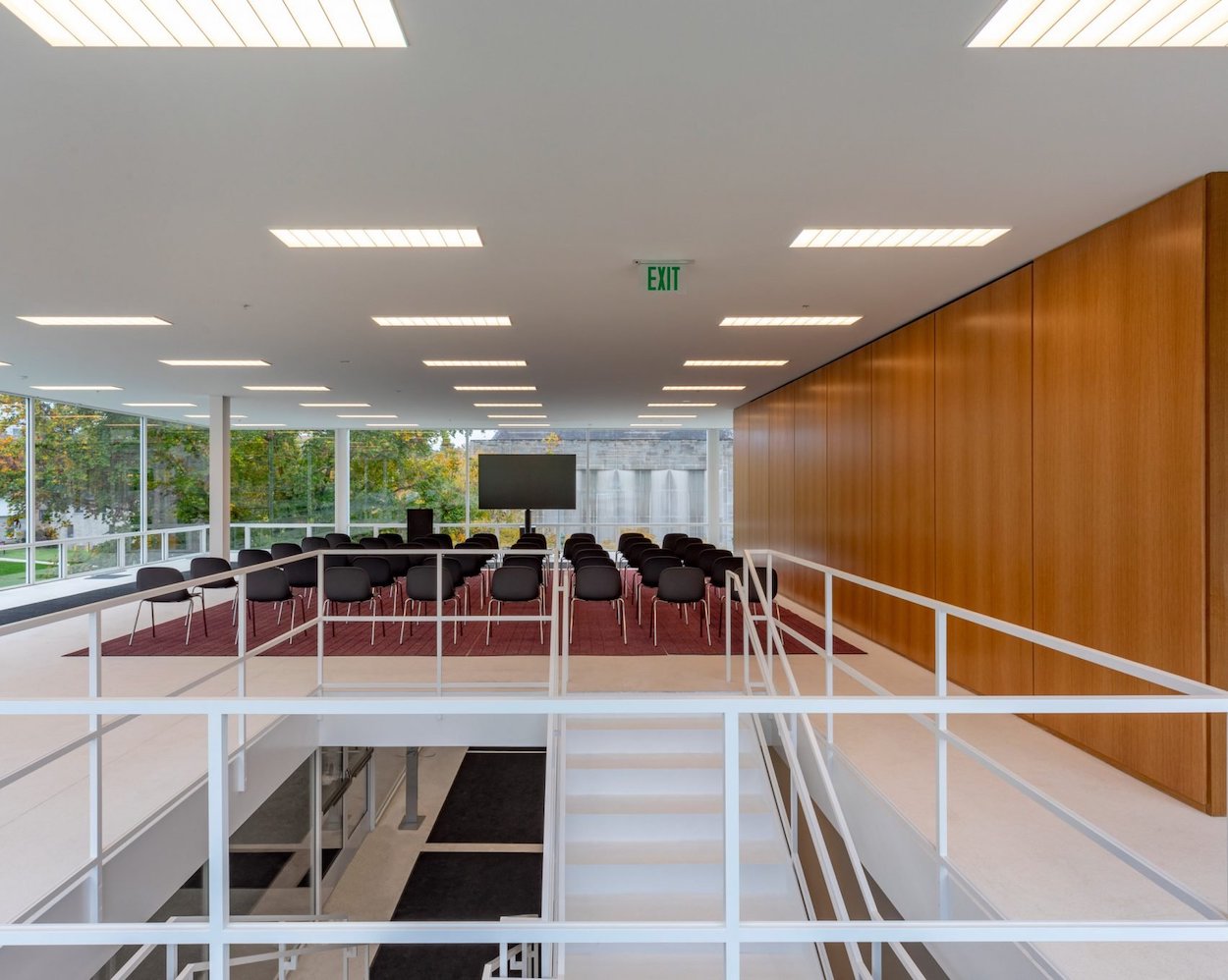In the early 1950s, shortly after Ludwig Mies van der Rohe completed the celebrated Edith Farnsworth House, he also developed plans for a like-minded structure that would house the fraternity Pi Lambda Phi’s Alpha Theta chapter at Indiana University. The building never materialized and was relegated to obscurity for more than six decades until Sidney Eskenazi, an IU alum and former fraternity member, unearthed the German architect’s drawings. The university soon located the documents in the archives of the Museum of Modern Art and the Art Institute of Chicago and tasked New York firm Thomas Phifer and Partners to faithfully realize the project in accordance with Mies’s vision.
After conducting intensive research to ensure the structure was built to 21st-century standards, the firm finally unveiled the finished building that will now house the Eskenazi School of Art, Architecture + Design. “To have it emerge from nowhere and on a site and campus like this presented a remarkable opportunity,” Phifer told Architectural Record when the project was announced. “The proportioning of the building, the glass, and the volumes had to stay because this is a Mies building. Those proportions determine the success of the architecture.”
Inside, select furnishings by Mies and fellow modernist Florence Knoll are situated within partitioned interiors defined by wooden walls and white epoxy terrazzo flooring. The rectangular building is quintessential Mies—floor-to-ceiling windows clad in high-performance glass almost completely envelop the top floor, which projects over the concrete-clad lower level. Its location on top of a hill, according to Phifer, ascribes the building a “heroic quality” and “temple-like presence due to its simplicity.” On the topic of miracles: the project’s unlikely revival begs the question of what other buildings forgotten to history may be hiding out there, waiting to be rediscovered.


